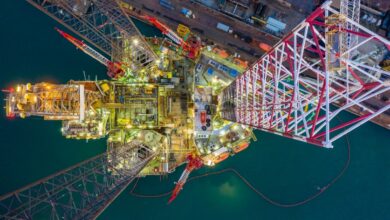Study: Half of well control incidents would benefit from early kick detection
By Linda Hsieh, Managing Editor

Approximately half of all loss of well control (LWC) incidents that occur on the US Continental Shelf may benefit from early kick detection, a study commissioned by the US Bureau of Safety and Environmental Enforcement (BSEE) found. Dr Dan Fraser with Argonne National Laboratory, which analyzed LWC incidents going back to 1992 on behalf of BSEE, presented highlights from the study’s findings at the 2014 SPE Annual Technical Conference & Exhibition in Amsterdam on 29 October. “What I mean by benefitted is perhaps there would not have been an incident, or perhaps the incident would not have been as severe as it was,” Dr Fraser said. “Those additional minutes that you may gain from early kick detection and response – that’s the difference between a data point and an incident.”
BSEE defines LWC events as:
- Uncontrolled flow of formation or other fluids. The flow may be to an exposed formation (underground) or at the surface.
- Flow through a diverter.
- Uncontrolled flow resulting from a failure of surface equipment or procedures.
The study also found that early kick detection is not only important for detecting kicks – it’s also critical in detecting losses. “Very often these losses are triggers that tell you a lot more or just as much about what’s going on in your well,” Dr Fraser explained.
Another data trend was that, although the number of offshore US well spuds has significantly decreased since 1992, the number of LWC incidents has not been reduced in the same way. Data showed that the annual number of well spuds peaked around 1997 at nearly 1,400, but 2013 saw fewer than 400 well spuds. “Typically we have on average two loss of well control events every year that are just drilling-related. There are another two that are production-related, so a total of about four well control events per year,” he said.
Although he emphasized that he was not speaking for BSEE, Dr Fraser noted the high interest that the regulator has taken in the study’s findings. “We’re providing the data. What they’re going to do with it is difficult to say. What I can say is that they are paying attention,” he commented.
Dr Fraser also noted that, looking at the drilling industry from an outsider’s perspective, he sees a critical opportunity that is being missed to improve the relationship between industry and regulator. “One of the things that you notice is BSEE tends to be very prescriptive in what they do… and the industry is not very happy with that,” he said. “One of the things that I observe is the industry very rarely, if ever, gives them an alternative. Look at what they’re doing and say, ‘I see what you’re doing, Mr Regulator, but in fact there may be a better way to do this but without being so prescriptive.’ ”
He urged the industry to find more ways to engage with the regulator and to suggest more performance-based ways of improving safety and operations. “I think we can really go miles toward improving the relationship and getting better regulations on the books that are more meaningful and longer-lasting.”




